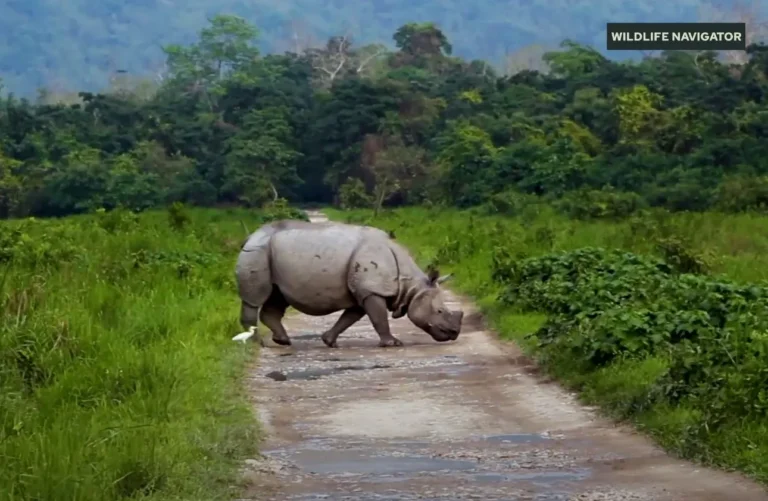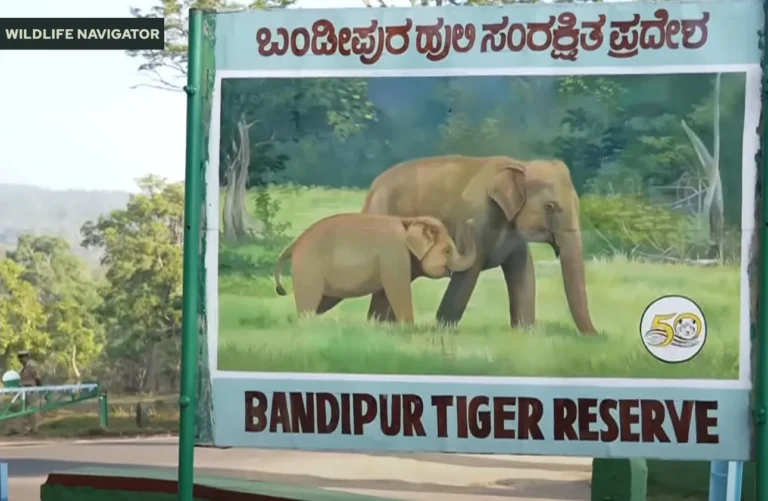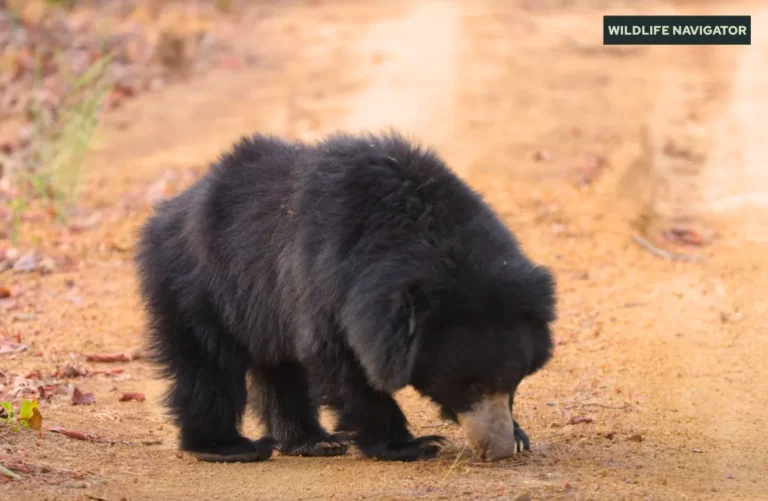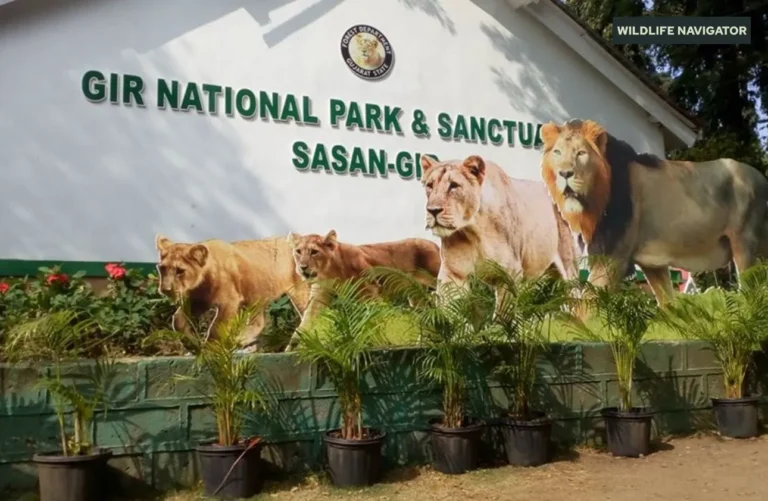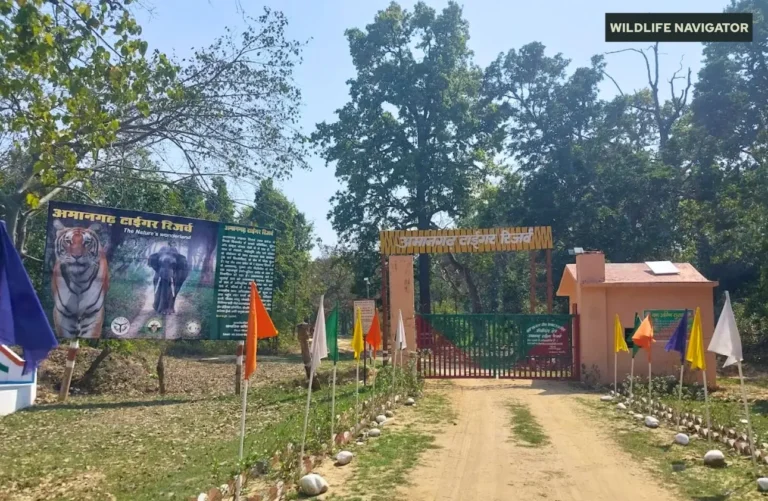Kuno National Park: A Complete Wildlife & Travel Guide
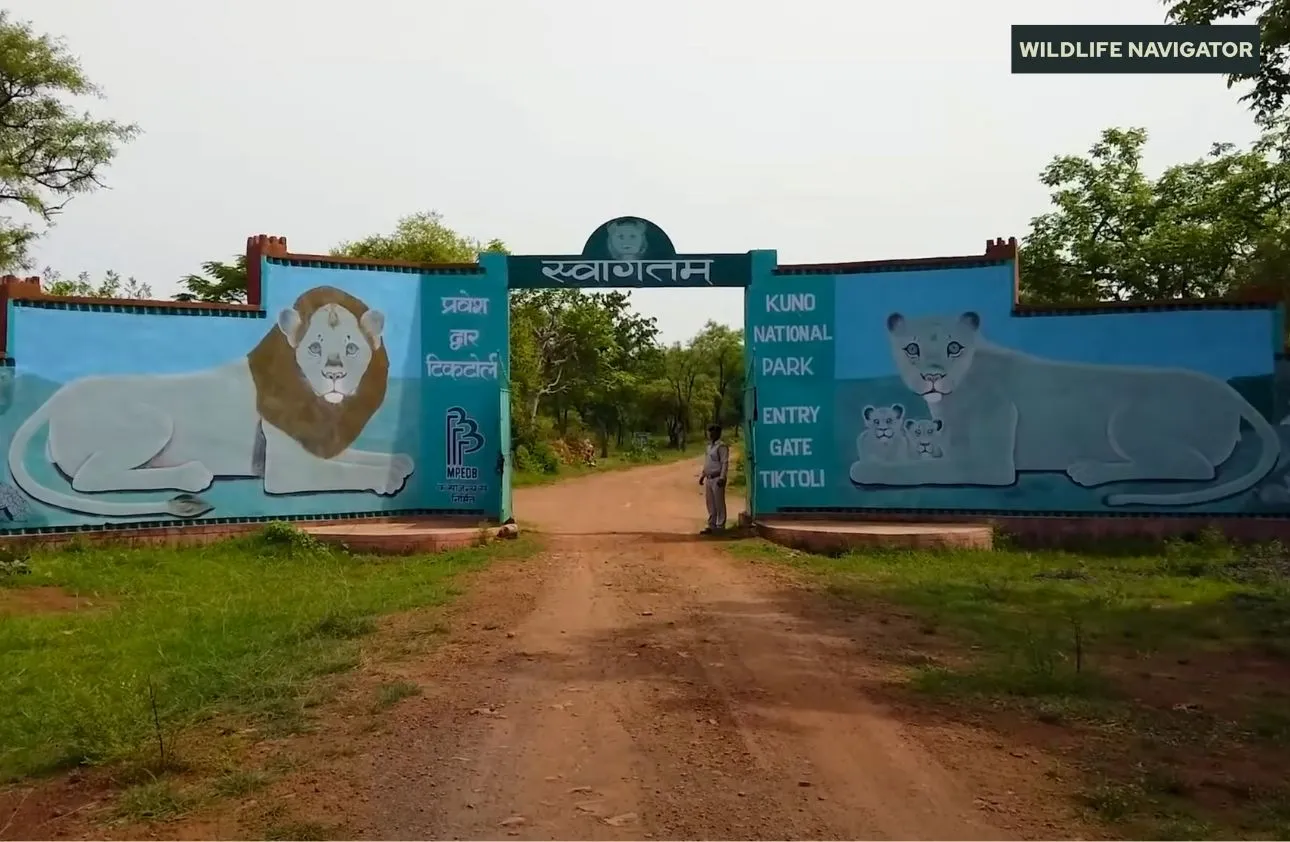
Kuno National Park is a hidden gem of Madhya Pradesh, India, located in the districts of Sheopur and Morena. Spanning over 750 square kilometres, the park is part of the Kuno Wildlife Sanctuary, which was originally established in 1981 and upgraded to a National Park in 2018. Nestled in the foothills of the Vindhya Range, Kuno boasts a unique combination of dry deciduous forests, grasslands, and riverine habitats, making it an ideal location for wildlife conservation and eco-tourism.
What makes Kuno particularly famous today is its role in India’s Cheetah Reintroduction Project. After the extinction of the Asiatic Cheetah in India in the mid-20th century, Kuno became the first site selected for reintroducing African cheetahs as part of a groundbreaking conservation effort. This project has placed Kuno in the spotlight not only for wildlife enthusiasts but also for international conservationists.
Apart from cheetahs, the park is home to a rich variety of wildlife, including leopards, striped hyenas, jackals, sambar, nilgai, and diverse bird species, making it an ideal destination for wildlife photography, safaris, and nature lovers seeking a serene forest experience.
The park also has a strategic ecological significance as it forms a crucial corridor connecting other wildlife habitats in the region, ensuring gene flow among populations of large mammals and supporting long-term conservation goals.
In essence, Kuno National Park is not just a wildlife haven but a symbol of India’s ambitious conservation journey, balancing biodiversity preservation with sustainable eco-tourism.
History, Geography & Landscape
Kuno National Park has an intriguing history tied closely to India’s wildlife conservation efforts. Originally declared as Kuno Wildlife Sanctuary in 1981, it was primarily aimed at protecting the Asiatic lion, with plans to relocate lions from Gujarat’s Gir Forest. Although the lion relocation didn’t materialise, the sanctuary later became the ideal choice for cheetah reintroduction. In 2018, it was upgraded to Kuno National Park, reflecting its growing importance as a wildlife conservation hotspot.
Geographically, Kuno lies in the Vindhyan hill range, characterised by undulating terrain, rocky outcrops, and seasonal rivers. The park includes parts of the Kuno River basin, which sustains a rich ecosystem of grasslands, scrub forests, and dry deciduous trees. These landscapes are perfect for supporting large carnivores and herbivores, as they provide a mix of open spaces for hunting and dense cover for shelter.
The park experiences a tropical climate with hot summers, monsoon rains, and mild winters. This seasonal variation creates lush grasslands during the rainy season and dry forests during summer, offering diverse habitats that attract a wide range of wildlife. Kuno’s topography also forms natural corridors connecting it to nearby forests, allowing wildlife to migrate and maintain genetic diversity, which is vital for species like cheetahs and leopards.
Flora & Fauna of Kuno
Kuno National Park is rich in biodiversity, offering a perfect blend of forests, grasslands, and riverine ecosystems.
Flora:
- The park primarily consists of dry deciduous forests with species like teak, tendu, dhok, and bamboo groves.
- Grasslands cover significant portions of the park, crucial for herbivores like chinkara, sambar, and nilgai, which form the prey base for predators.
- Riverbanks and seasonal water bodies support aquatic vegetation and provide drinking spots for wildlife, helping maintain the ecosystem’s balance.
Fauna:
- Mammals: Indian leopard, striped hyena, golden jackal, jungle cat, wild boar, sambar deer, nilgai, and chinkara.
- Predators: Besides cheetahs, leopards and hyenas are major carnivores in the park.
- Birdlife: Over 200 species of birds have been recorded, including Indian paradise flycatchers, vultures, eagles, owls, and waterbirds near river zones.
- Reptiles & Amphibians: Kuno hosts snakes, lizards, monitor lizards, and frogs, which play an important role in the food chain.
The diversity of flora and fauna makes Kuno an ideal habitat for large predators and a critical site for observing natural interactions between species in a semi-arid ecosystem.
The Cheetah Reintroduction Project
Kuno National Park is internationally recognised for India’s Cheetah Reintroduction Project, a landmark conservation initiative aimed at reviving the cheetah population in the country.
Background:
- The Asiatic cheetah became extinct in India by 1952 due to habitat loss, hunting, and depletion of prey.
- In 2022, the Indian government, in collaboration with Namibia and South Africa, began relocating African cheetahs to Kuno, marking the first step towards restoring a species lost for decades.
Implementation:
- Selected cheetahs were carefully acclimatised in enclosures within Kuno before being released into open areas.
- The park provides a prey-rich environment, consisting of chinkara, sambar, and nilgai, ensuring the cheetahs have sufficient hunting grounds.
Challenges:
- Establishing a new predator in the ecosystem required monitoring interactions with other carnivores like leopards and hyenas.
- Maintaining a healthy prey base and managing human-wildlife conflicts remain ongoing tasks.
Success Stories:
- Initial observations show that cheetahs are adapting well, hunting naturally, and exploring Kuno’s expansive grasslands.
- This project is hailed globally as a model for species reintroduction, inspiring conservation efforts in other regions.
Kuno National Park, through this initiative, has transformed from a local wildlife sanctuary into a global symbol of wildlife restoration, making it one of the most important conservation sites in India today.
Other Wildlife Conservation Efforts
Apart from the cheetah reintroduction, Kuno National Park has been at the forefront of several significant wildlife conservation initiatives, aimed at protecting and restoring its unique ecosystem. These efforts ensure long-term sustainability for both predators and prey, while also maintaining ecological balance.
1. Habitat Restoration and Prey Base Management
- A critical part of Kuno’s conservation strategy has been the restoration of grasslands and riverine areas, which provide natural cover and hunting grounds for predators.
- Authorities have actively enhanced the prey base by ensuring healthy populations of sambar, chinkara, nilgai, and wild boar, which are vital for supporting large carnivores like cheetahs and leopards.
- Grassland management also involves controlling invasive plant species and promoting native vegetation to maintain a healthy ecosystem.
2. Village Relocation and Human-Wildlife Coexistence
- To reduce human-animal conflict, some villages in and around Kuno have been relocated under government schemes, allowing wildlife to roam freely in their natural habitat.
- Local communities are engaged in eco-tourism and conservation programs, creating alternative livelihoods while supporting wildlife protection.
- Awareness campaigns educate residents about the importance of preventing poaching, illegal logging, and hunting.
3. Anti-Poaching Measures and Forest Monitoring
- Kuno has a dedicated forest department team and patrolling units that monitor wildlife movement and prevent poaching.
- Modern technologies like camera traps, GPS tracking, and drone surveillance are used to monitor predator and prey populations, ensuring the park remains safe for wildlife.
- Special attention is given to protecting vulnerable species such as birds of prey, reptiles, and smaller mammals.
4. Collaboration with NGOs and International Partners
- Kuno’s conservation efforts benefit from partnerships with national and international NGOs, which provide expertise, funding, and technical support.
- These collaborations have been instrumental in scientific research, wildlife health monitoring, and habitat improvement projects.
5. Future Plans
- The park aims to expand its wildlife corridors to neighboring forests, allowing animals to migrate safely and maintain genetic diversity.
- Further reintroduction projects are planned, including monitoring long-term survival of cheetahs and possibly other endangered species.
- Eco-tourism is being developed in a sustainable manner, ensuring that tourism revenue supports conservation without disturbing the habitat.
Through these multi-pronged efforts, Kuno National Park has evolved into a model for modern wildlife conservation, balancing species restoration, habitat protection, and human participation in ecological stewardship.
Best Time to Visit Kuno National Park
Visiting Kuno National Park requires some planning, as the park experiences distinct seasonal changes that affect wildlife activity, accessibility, and overall experience. Choosing the right time can make your safari and wildlife spotting much more rewarding.
1. Seasonal Overview
- Summer (March to June): Temperatures range from 25°C to 45°C. Summers are hot and dry, making some areas of the park less accessible. Wildlife is often seen near water bodies, but daytime safaris can be uncomfortable due to high heat.
- Monsoon (July to September): The park receives moderate to heavy rainfall, rejuvenating the grasslands and riverine habitats. While the scenery becomes lush and green, safari routes can become muddy or waterlogged, limiting accessibility. Wildlife sightings may also be less predictable due to dense vegetation.
- Winter (October to February): This is the best time to visit Kuno National Park, with pleasant temperatures ranging from 10°C to 25°C. Wildlife is more active and visible during early mornings and late afternoons. Clear skies and moderate weather make it ideal for photography, birdwatching, and safaris.
2. Wildlife Spotting Tips by Season
- Winter: Leopards, hyenas, and cheetahs are more active. Herbivores like nilgai, chinkara, and sambar are easier to spot grazing in open grasslands.
- Summer: Focus on visiting waterholes and riverbanks, as animals congregate around water sources. Early morning and late evening safaris are recommended.
- Monsoon: Best for witnessing the park’s vibrant flora, migratory birds, and the lush greenery of grasslands, though sightings of predators may be limited.
3. Ideal Duration
- A 2–3 day visit is recommended to cover major safari zones, spot wildlife, and experience the park’s diverse landscapes.
- Combining safaris with visits to nearby attractions like Shivpuri, Chambal River Sanctuary, or local eco-tourism initiatives can make your trip more enriching.
4. Safari Timing Recommendations
- Morning Safari: Typically starts around 6:00–7:00 AM. Wildlife is most active, and the morning light is perfect for photography.
- Evening Safari: Around 3:00–5:30 PM. Predators return from hunting, and herbivores are visible in open areas.
- Afternoon: Not ideal due to heat and lower wildlife activity, except during winter months.
Choosing the right season and timing ensures that visitors get the most out of Kuno National Park, both in terms of wildlife encounters and immersive nature experiences.
Safari & Tourism Experience at Kuno National Park
Kuno National Park offers an immersive wildlife experience, allowing visitors to witness India’s diverse flora and fauna up close while exploring its vast grasslands and forested areas. The park combines adventure with conservation awareness, making it a must-visit for nature enthusiasts and wildlife photographers.
1. Types of Safaris
- Jeep Safaris: The most common way to explore Kuno. Safaris are conducted in open or closed vehicles accompanied by trained forest guides who help locate wildlife and explain the park’s ecology.
- Walking Trails & Guided Nature Walks: In selected areas, visitors can take short guided walks to observe birds, reptiles, and smaller mammals. These are highly educational and provide an intimate connection with the forest.
- Special Cheetah Observation Zones: Some sections of the park are designated for monitoring cheetahs, where guided safaris allow visitors to observe these majestic predators in their natural habitat without disturbing them.
2. Safari Timings & Booking
- Morning Safaris: Typically between 6:00 AM – 10:00 AM. Best for spotting predators and early morning bird activity.
- Evening Safaris: Between 3:00 PM – 6:00 PM. Ideal for watching animals returning from hunts or grazing in open grasslands.
- Booking: Safaris are generally booked through the park’s forest department or authorised eco-tourism partners. Prior reservations are recommended, especially during peak seasons.
3. Wildlife Viewing Tips
- Maintain silence and patience; sudden movements can scare animals away.
- Bring binoculars and a good camera for photography, but avoid flash, which can disturb wildlife.
- Follow guidelines provided by guides, including staying inside vehicles and not feeding animals.
4. Eco-Tourism & Local Interaction
- Kuno promotes eco-tourism initiatives to involve local communities. Visitors can learn about village life, traditional crafts, and forest conservation practices.
- Some local eco-lodges offer educational programs, birdwatching tours, and nature workshops that support both conservation and sustainable livelihoods.
5. Memorable Experiences
- Spotting a cheetah sprinting across the grasslands or a leopard stealthily moving through the forest.
- Observing a variety of bird species, including vultures, eagles, and migratory birds during winter.
- Experiencing the tranquillity of Kuno’s landscapes, from open grasslands to dense forest patches, offering a perfect blend of adventure and serenity.
Kuno National Park’s safari and tourism experience is designed to connect visitors with nature while prioritizing wildlife safety and ecological balance, making it one of India’s most promising wildlife destinations.
How to Reach Kuno National Park
Kuno National Park, located in the Sheopur and Morena districts of Madhya Pradesh, is accessible by road, rail, and air, making it feasible for both domestic and international tourists. Here’s a detailed guide on how to plan your journey:
1. By Air
- The nearest airports to Kuno are:
- Gwalior Airport (150 km): Well-connected to major cities like Delhi, Mumbai, and Jaipur. Regular flights are available.
- Bhopal Airport (360 km): Another option, though farther, suitable for those coming from central India.
- From the airport, you can hire a taxi or private cab to reach Kuno, which usually takes 3–4 hours from Gwalior.
2. By Train
- Sheopur Kalan Railway Station: The closest railway station, around 30–40 km from the park.
- Gwalior Railway Station: About 150 km away, with excellent connectivity to major Indian cities like Delhi, Mumbai, Jaipur, and Agra.
- From the station, taxis or private cabs are available to reach Kuno National Park.
3. By Road
- Kuno is well-connected by road through NH44 and state highways.
- Distances from major cities:
- Delhi: ~450 km, 8–9 hours by car.
- Jaipur: ~400 km, 7–8 hours by car.
- Bhopal: ~360 km, 7 hours by car.
- Road trips are popular for wildlife enthusiasts, as they allow flexible timing for safaris and exploration of nearby attractions.
4. Local Transportation
- Once near Kuno, authorized safari vehicles and guides are required to enter the park. Private vehicles are generally not allowed inside the park to ensure wildlife safety.
- Some eco-tourism lodges offer pickup and drop services from nearby railway stations and airports.
5. Travel Tips
- Plan your journey considering road conditions during monsoon, as some routes may become difficult to navigate.
- Carry a GPS-enabled device or offline maps, as cellular connectivity inside the park may be limited.
- Booking your safari in advance ensures seamless access and better wildlife spotting opportunities.
By combining air, rail, and road travel options, visitors can conveniently reach Kuno National Park while planning their itinerary to maximise wildlife experiences.
Accommodation Options Near Kuno National Park
While Kuno National Park is primarily focused on conservation and wildlife, visitors have several options for staying nearby, ranging from forest rest houses to eco-lodges and budget accommodations. Staying close to the park enhances wildlife spotting opportunities and allows early morning safaris.
1. Forest Rest Houses
- The Madhya Pradesh Forest Department manages several rest houses in and around Kuno.
- These are basic yet comfortable, offering essential amenities like beds, bathrooms, and dining facilities.
- Ideal for wildlife enthusiasts who prioritize proximity to the park over luxury.
- Booking is generally done through the official forest department website or local offices.
2. Eco-Lodges & Resorts
- Eco-lodges are designed to provide a comfortable stay while maintaining environmental sustainability.
- Many lodges use solar energy, rainwater harvesting, and eco-friendly construction to minimize their impact on the habitat.
- Some lodges offer guided safaris, nature walks, and birdwatching tours as part of their packages, allowing visitors to experience the park more intimately.
3. Budget & Guest Houses in Sheopur & Morena
- Sheopur and Morena towns, located 30–50 km from Kuno, offer budget hotels, guesthouses, and homestays.
- These options are suitable for travellers looking for affordable accommodations while still being within driving distance of the park.
- Local homestays provide opportunities to experience regional culture, cuisine, and village life.
4. Luxury Accommodation
- Currently, luxury resorts near Kuno are limited, but some high-end eco-lodges offer premium tents or cottages with modern amenities.
- These are perfect for travellers seeking a blend of comfort and close-to-nature experience.
- Advanced booking is recommended, especially during the peak season (October to March).
5. Travel Tips for Accommodation
- Book in advance: During peak months, forest rest houses and eco-lodges can fill up quickly.
- Choose based on safari plans: Staying closer to park entrances ensures early morning access and better wildlife sightings.
- Check for guided packages: Many eco-lodges and resorts offer bundled safari and accommodation packages, saving time and cost.
By choosing the right accommodation, visitors can enjoy early morning safaris, serene landscapes, and a comfortable stay, making their trip to Kuno National Park memorable and convenient.
Travel Tips & Visitor Guidelines
Visiting Kuno National Park is an unforgettable experience, but following the right guidelines and tips ensures a safe, responsible, and enjoyable trip while protecting the wildlife and habitat.
1. Entry Permits and Safari Booking
- Entry into the park requires official permits, obtainable from the forest department office or authorized eco-tourism partners.
- Safari bookings should be done in advance, especially during peak seasons (October–March), to secure the best timings and routes.
2. Safety and Conduct Inside the Park
- Always stay inside designated safari vehicles; walking alone inside the park is prohibited.
- Do not feed animals or attempt to attract wildlife.
- Maintain silence and avoid sudden movements; this increases chances of spotting predators and minimizes disturbance.
3. Clothing and Gear
- Wear neutral-colored clothing (green, brown, khaki) to blend with the environment.
- Carry binoculars, camera, sunscreen, and a hat for comfort and better wildlife viewing.
- Bring a water bottle and snacks, as facilities inside the park are limited.
4. Health & Safety
- Carry a basic first-aid kit and insect repellents.
- Stay hydrated and avoid venturing into dense areas without a guide.
- Be aware of seasonal risks: extreme heat in summer and cold nights in winter.
5. Responsible Tourism
- Do not litter; carry your trash back with you.
- Avoid plastic and single-use items inside the park.
- Support local communities by purchasing from eco-lodges or local artisans.
6. Suggested Itinerary
- Day 1: Arrive at Sheopur or Morena, check into your accommodation, and explore nearby local attractions.
- Day 2: Morning and evening safaris inside Kuno National Park.
- Day 3: Optional guided nature walk, birdwatching, or visit nearby Chambal Sanctuary before departure.
Following these guidelines ensures a safe, responsible, and memorable visit, allowing travellers to enjoy Kuno National Park while contributing to its conservation efforts.
Conclusion
Kuno National Park is more than just a wildlife sanctuary; it is a beacon of India’s conservation efforts. From the historic cheetah reintroduction project to ongoing initiatives for habitat restoration and eco-tourism, Kuno represents a successful balance between nature preservation and responsible tourism.
Visitors to Kuno can witness a rich diversity of flora and fauna, from majestic predators like leopards and cheetahs to a variety of herbivores and over 200 bird species. Its unique landscape of grasslands, deciduous forests, and riverine zones makes it a haven for wildlife photographers, researchers, and nature enthusiasts alike.
The park’s significance goes beyond tourism; it is a symbol of hope for India’s endangered species and a model for wildlife conservation globally. By following responsible travel practices, tourists can actively contribute to preserving this delicate ecosystem for future generations.
